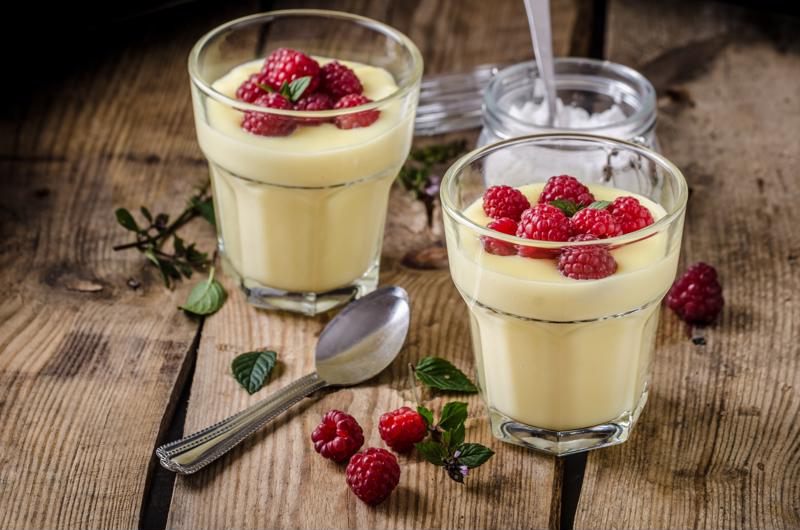One of the most impressive – although not positive – achievements of pop culture is turning a flavorful and initially rare and novel ingredient like vanilla into a byword for plain and boring. While some uninspired applications of this flavor can make it easier to see why vanilla has this negative connotation, there are many opportunities to use it in ways that will thrill taste buds and bring eaters back for more. Boulder pastry arts students should be sure to understand why vanilla can be such a powerful ingredient and how it came to be so common, as well as how to best use it in a variety of different recipes.
 Vanilla can take a starring role in a number of desserts.
Vanilla can take a starring role in a number of desserts.Understanding vanilla's historic and current role in baking
Vanilla was unknown in much of the world beyond present-day Mesoamerica (present-day Mexico and nearby areas) before Spanish colonizers brought this spice back to Europe. It spread through that continent, as well as into the Middle East, Asia and Africa. Like many other foods that originated in the Americas, such as tomatoes, chocolate and peppers, Europeans initially saw vanilla as exotic as well as highly flavorful.
This led to a high level of demand and a number of efforts to grow vanilla orchids outside of Mesoamerica, as well as, much later on, the development of synthetic vanilla as a substitute. This is due in part to vanilla's high labor costs for production. As WebMD pointed out, vanilla is the second-most expensive spice in the global market, falling behind only saffron. Part of the high cost of vanilla stems from the need for workers to hand pollinate it, as only a single species of bee native to Central America can perform this task. In the other countries where vanilla is grown, a wooden needle must be used instead.
Pastry Arts magazine looked at the five major areas that currently produce vanilla and what sets each type of this spice apart. The differences among each include:
- Indonesia: Indonesian vanilla has some smoky and woody notes and stands up better to high temperatures in cooking than other varieties.
- Mexico: The most classic form of vanilla and the most abundant, which can be reliably combined with a variety of warmer spices.
- Madagascar: Sometimes called Bourbon vanilla, this variety also offers a traditional flavor.
- Tahiti: This form of vanilla offers some fruity and floral flavors that accompany the instantly recognizable vanilla taste.
- Uganda: Ugandan vanilla has some hints of chocolate, but is similar to vanilla from Madagascar.
How to effectively utilize vanilla in the pastry arts
Vanilla has a wide variety of applications, from ice cream to savory concoctions like coconut vanilla shrimp and vanilla mashed potatoes. In the world of pastry arts, there's a never-ending array of recipes to consider. Some recipes incorporating vanilla that we've already published include chocolate cake with creme chantilly and raspberry compote, two vegetable-focused desserts, classic sponge cake and sea salt caramels. We also have an in-depth guide to preparing and using fresh vanilla specifically as opposed to a premade extract or imitation recipe.
Vanilla can also take a starring role in a number of other forms, from pot de crème, as featured by Bon Appétit, to vanilla cloud cake, from Fine Cooking. As such a common ingredient, it can be a challenge to find ways to make it truly stand out as a flavor. However, using fresh vanilla and paying attention to the variety purchased can go a long way in this regard. If you want to learn more about vanilla and so many other aspects of baking, consider a pastry arts program in Boulder.

